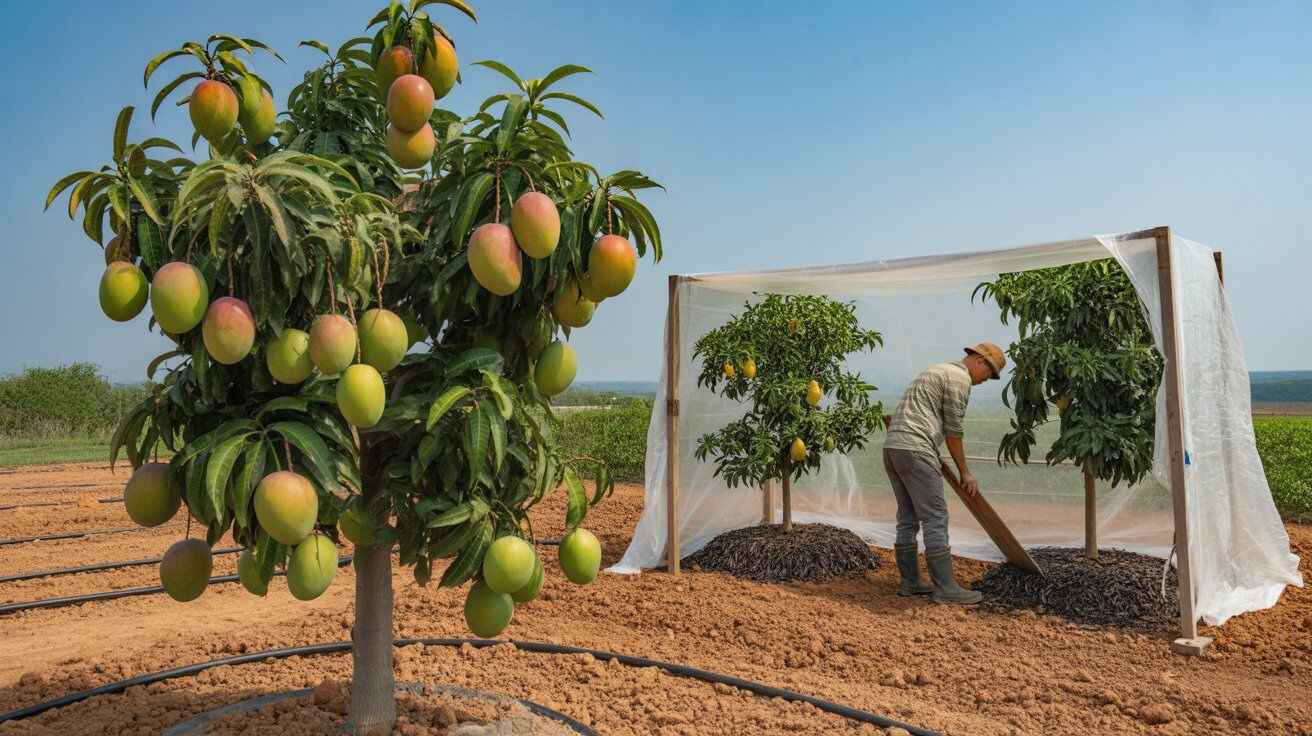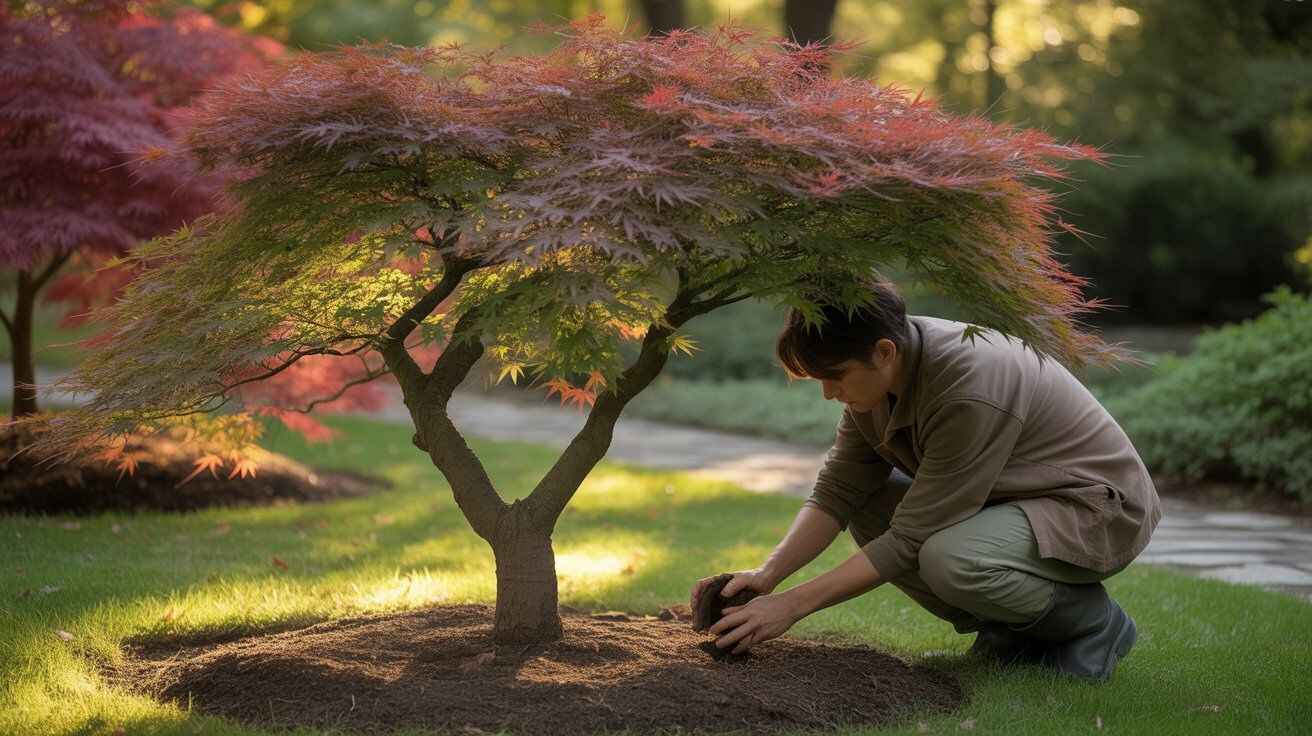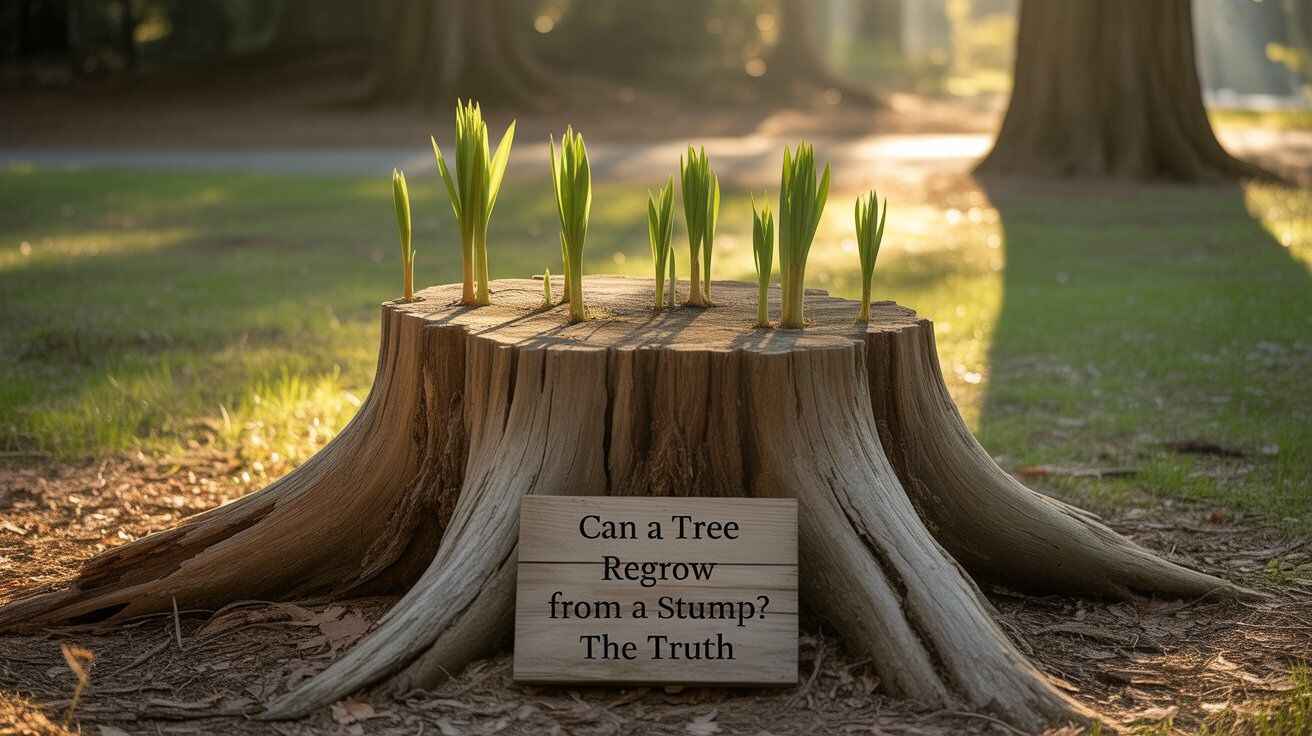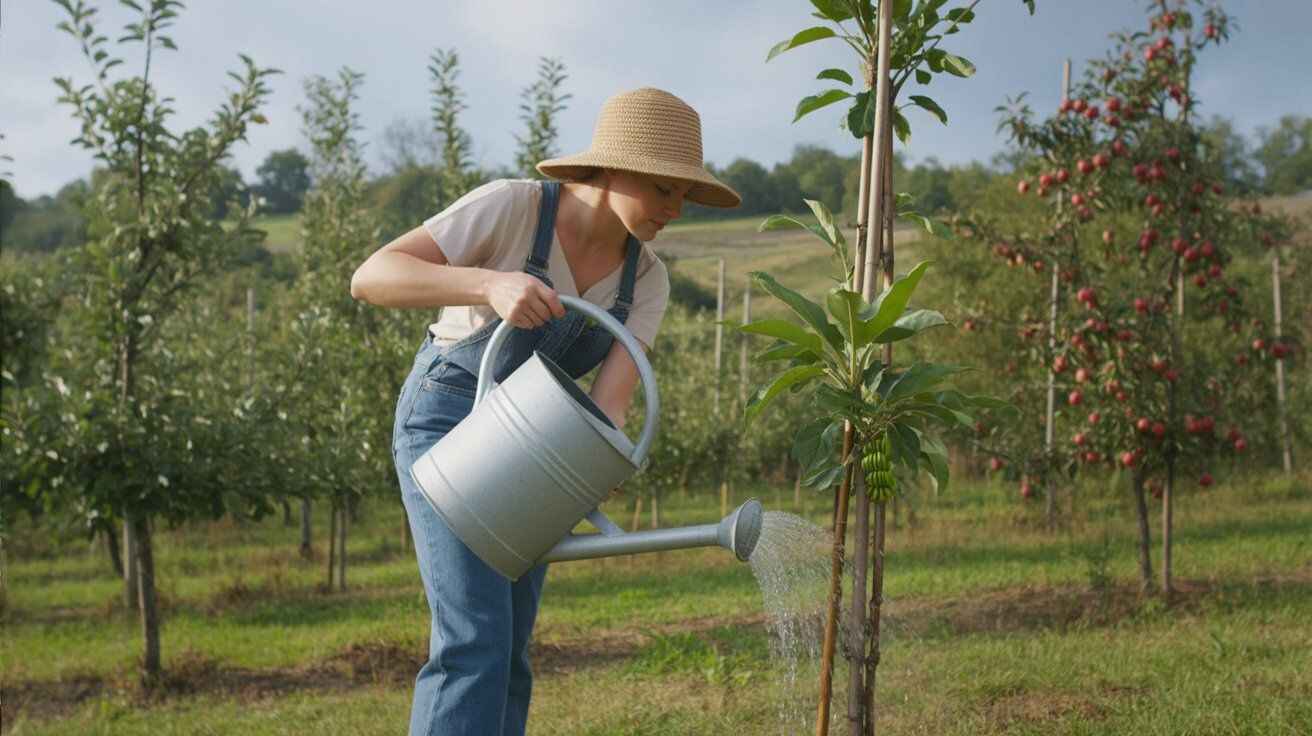Grow mango trees in Texas with proper varieties, planting, soil, watering, protection, and care for healthy growth and fruiting.
Climate Considerations for Growing Mangoes in Texas
Gardeners often ask, “can mango trees grow in Texas safely?” Success depends on climate. Mango trees thrive in southern coastal regions where winters are mild. Frost or temperatures below 30°F can damage growth, so mango tree survival in Texas winters requires careful site selection or protection. Full sun exposure is essential for flowering and fruiting. Understanding mango growing zones in Texas helps determine whether a tree should be planted in the ground or in a container for easier overwintering.
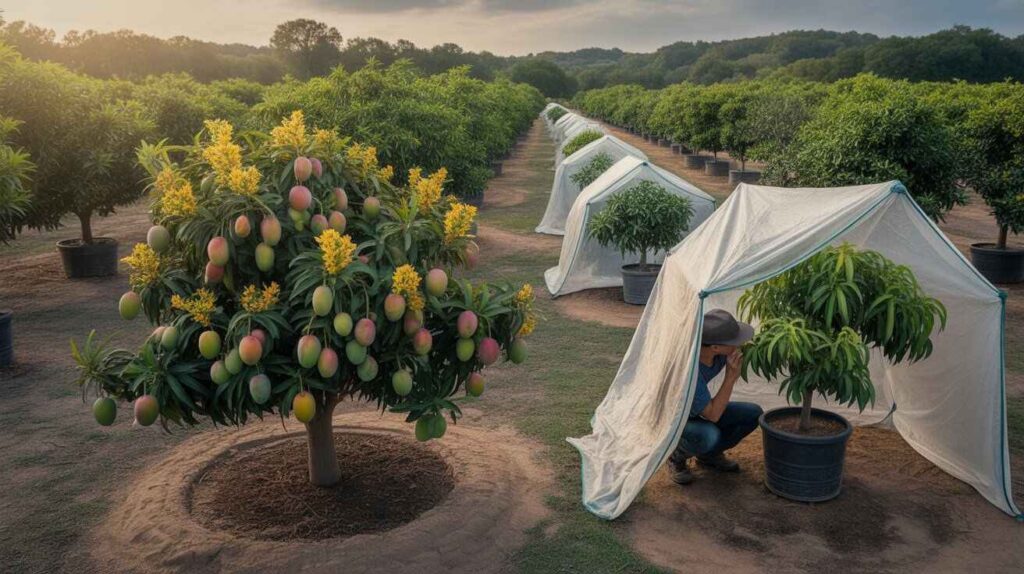
Best Mango Varieties for Texas Gardens
If you’re asking, “can mango trees grow in Texas and produce fruit?”, variety selection is key. Dwarf and semi-dwarf mango cultivars like Haden, Irwin, Tommy Atkins, Kent, and Keitt are well-suited for Texas climates. These varieties handle heat well and can fruit in subtropical conditions. Seed-grown mango trees may struggle, so grafted mango trees are recommended. Choosing the right mango tree varieties for Texas ensures healthy growth, proper fruiting, and easier management in both ground and container planting.
Planting Mango Trees in Texas
| Planting Factor | Best Practice | Reason / Benefit |
|---|---|---|
| Location | Sunny spot with well-draining soil | Ensures optimal growth & fruiting |
| Tree Type | Grafted mango trees | Reliable fruiting & true-to-type characteristics |
| Planting Depth | Same as nursery | Prevents root stress & promotes healthy establishment |
| Spacing | Adequate airflow between trees | Reduces disease risk and promotes strong growth |
| Container Planting | Large pots (if not in-ground) | Allows root expansion and stability |
| General Care | Water regularly, mulch base, monitor for pests | Supports healthy growth, flowering, and fruiting |
Fertilization and Pruning Techniques
Gardeners often ask, “can mango trees grow in Texas and remain healthy without fertilization?” Proper feeding is essential. Follow a seasonal mango tree fertilization schedule with nitrogen for leaf growth and potassium for flowering and fruiting. Light pruning improves airflow, controls shape, and encourages mango tree fruiting in Texas. Remove dead or crowded branches carefully to prevent stress. Consistent fertilization and pruning ensure strong growth, maximize fruit production, and maintain overall mango tree care in Texas throughout the year.
Planting Mango Trees in Texas
Many gardeners ask, “can mango trees grow in Texas successfully from planting?” Yes, with proper care. Select a sunny location with well-draining soil and plant grafted mango trees at the same depth as in the nursery. Space trees adequately to ensure airflow and reduce disease risk. For container planting, use large pots to allow root expansion. Proper mango tree planting in Texas sets the foundation for healthy growth, flowering, and eventual mango tree fruiting in Texas.
Soil and Watering Needs
For gardeners wondering, “can mango trees grow in Texas without proper soil?”, the answer is no. Mango tree soil requirements include well-draining sandy or loamy soil to prevent root rot. Regular watering is critical, especially during hot Texas summers, but avoid waterlogging. Follow a consistent mango tree watering schedule to maintain soil moisture while promoting deep root growth. Proper soil and irrigation practices directly influence mango tree growth in Texas and support flowering and fruit development.
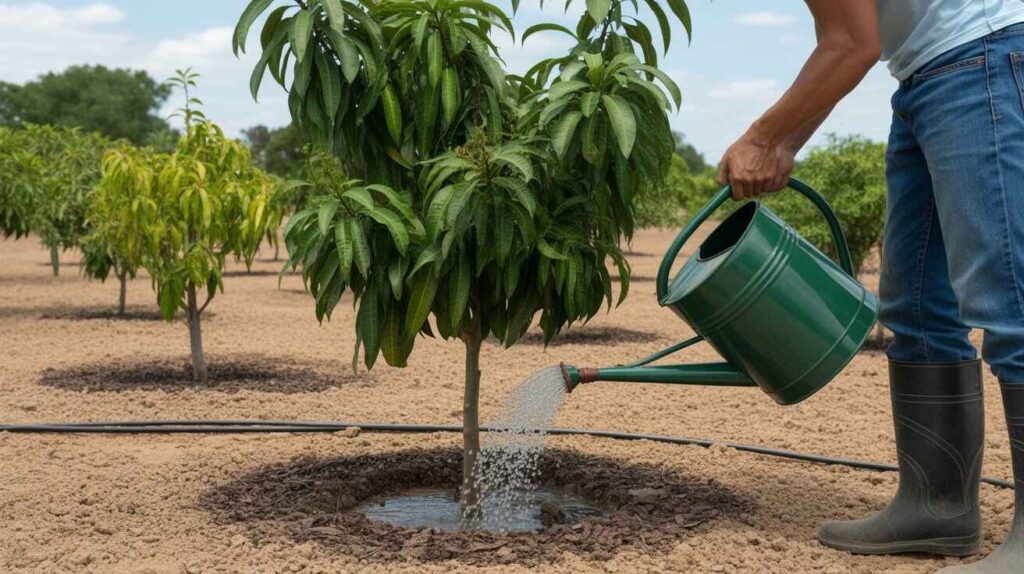
rotecting Mango Trees from Texas Winters
Many gardeners ask, “can mango trees grow in Texas year-round?” Yes, but protection is essential in colder regions. Mango tree survival in Texas winters requires insulating trunks, covering small trees with frost cloth, or moving container trees indoors. Mulching around the base preserves soil warmth, and selecting planting sites with southern exposure reduces frost risk. These overwintering techniques help mango trees thrive despite occasional freezes, ensuring continued growth and future fruiting even in Texas’s subtropical and borderline zones.
Common Pests and Diseases in Texas Mango Trees
Gardeners often ask, “can mango trees grow in Texas without pest problems?” While they can, vigilance is key. Common threats include aphids, scale, mealybugs, and fungal infections. Regular inspection and early intervention prevent damage. Use organic or chemical treatments as needed and maintain good airflow through pruning. Proper watering and soil care reduce disease risk. Understanding mango tree pests in Texas and implementing preventive strategies ensures healthy growth, strong fruiting, and long-term success for mango trees in Texas.
Harvesting Mangoes in Texas
Gardeners ask, “can mango trees grow in Texas and produce ripe fruit?” Yes, with proper care. Harvest when mangoes reach full color and yield slightly to gentle pressure. Timing varies by variety and region, so monitor closely. Avoid leaving fruit on the tree too long to prevent overripening. Proper mango tree fruiting in Texas depends on consistent watering, fertilization, and sun exposure. Harvested mangoes can continue ripening off the tree, ensuring flavorful, sweet fruit for home consumption.
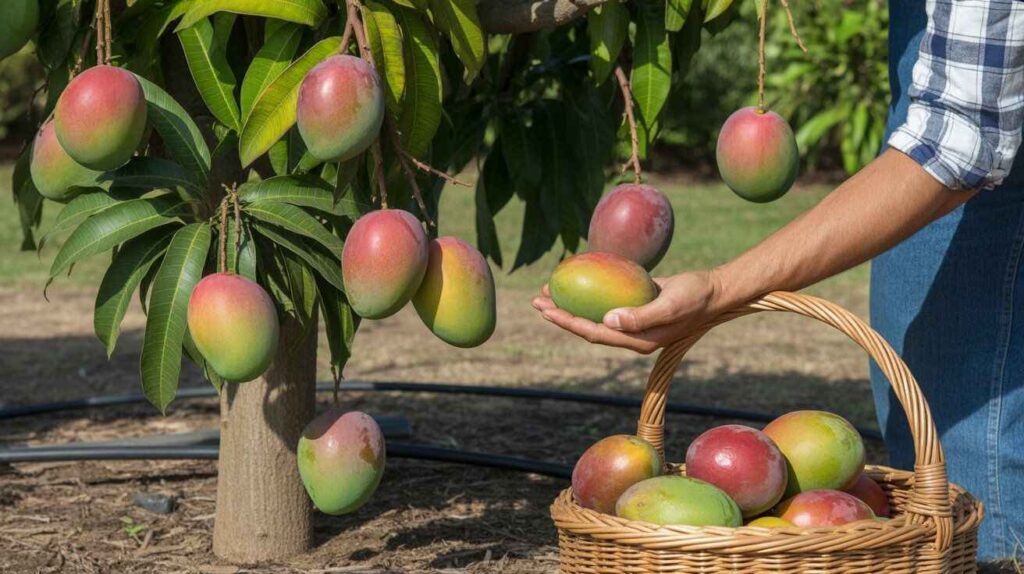
FAQ — Mango Trees in Texas
Q1: Can mango trees grow in Texas year-round?
Yes, with proper overwintering techniques and selection of hardy varieties.
Q2: Which mango varieties grow best in Texas?
Dwarf and semi-dwarf varieties like Haden, Irwin, and Tommy Atkins thrive.
Q3: How often should I water mango trees in Texas?
Follow the seasonal mango tree watering schedule, adjusting for heat and rainfall.
Q4: Can mango trees fruit in Texas?
Yes, proper care ensures healthy mango tree fruiting in Texas.
Q5: How do I protect mango trees from frost?
Insulate trunks or move potted trees indoors.

Jhanzaib Khan, with over 50 years of dedication to nature and tree conservation, is a leading authority in the world of trees and environmental care. From his early years exploring forests to guiding communities in sustainable tree planting, Jhanzaib has combined hands-on experience with a lifelong passion for the environment. He specializes in tree species identification, tree care, forest management, and environmental awareness. His insights have been featured in multiple nature blogs, workshops, and local conservation projects.

